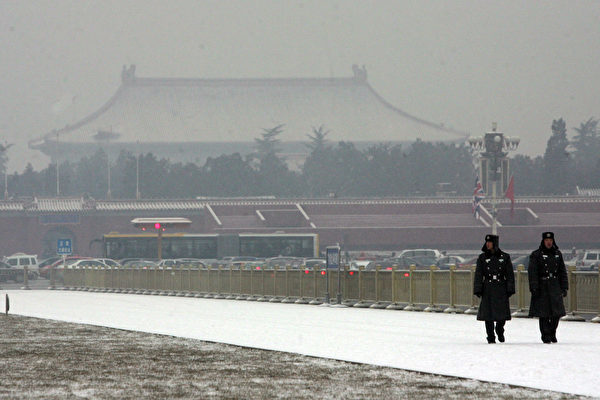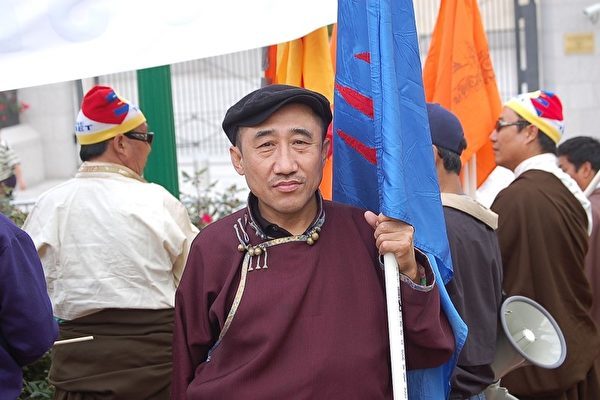People eat free ice cream given to them by restaurant staff as they wait for a table outside a popular local restaurant during a heatwave in Beijing, China. (Photo by Kevin FrayerGetty Images)
[People News] Recently, the Chinese Communist Party’s (CCP) National Energy Administration released data claiming that in July, China’s national electricity consumption exceeded 1 trillion kilowatt-hours (kWh). This is the first time in the world that a single country has consumed more than 1 trillion kWh in a single month.
What does that mean? 1 trillion kWh is roughly equivalent to Japan’s entire annual electricity consumption, the total electricity used by all ten ASEAN countries in a year, and double China’s electricity consumption in 2015.
Using the “Li Keqiang Index” to Paint a Rosy Picture
Globally, total annual electricity consumption across more than 200 countries is about 32 trillion kWh. So, China’s July consumption alone accounted for about 3% of the world’s yearly total. This is almost an astronomical figure.
The name Li Keqiang has already become sensitive and taboo in CCP discourse, but the “Li Keqiang Index”—his political legacy—is now being revived by the regime to cover up the disastrous state of China’s economy. By hyping the “1 trillion kWh in a single month,” state media claims this is proof the economy is recovering, manufacturing is leading the world, and China has triumphed over Western tariffs.
But let’s think simply: just because someone spends money lavishly doesn’t mean they’re actually rich. Likewise, eating a lot doesn’t necessarily mean someone is healthy—overeating without digestion is a disease.
The CCP attributes July’s high electricity use to two factors:
-
Record heatwave – July was said to be the hottest in 61 years, especially in provinces like Henan, Shaanxi, and Shandong, where residential power consumption rose 30% year-on-year. Nationwide, household electricity use rose 18%.
-
Manufacturing & high-tech industries – New energy vehicles, big data, AI, drones, robotics, etc., which reportedly consumed vast amounts of power. This second factor was spun as evidence of industrial upgrading and policy success.
Let’s analyze whether this “1 trillion kWh in a month” really proves economic vitality.
500 Million Household Meters = CCP’s Cash Machines
In East and North China, average July temperatures were indeed 2–3°C higher than usual. Cooling accounted for 35% of the consumption increase. But in recent years, the CCP has promoted energy-efficient air conditioners, refrigerators, and even LED bulbs. When boasting about “green appliances,” they highlight energy savings. But when they need propaganda, suddenly air conditioning is portrayed as the culprit of massive demand.
The real “non-energy-saving devices” are China’s electricity meters. Every household meter has effectively become a money-printing machine for the State Grid. Everyone knows: even if you turn off all appliances, meters keep ticking.
In 2023, China’s National Bureau of Statistics and the Energy Administration published figures showing electricity consumption exceeded electricity generation by nearly 300 billion kWh in the first 11 months—electricity “overdrafts” as if supplied by aliens!
In January 2024, residents in Guang’an, Sichuan reported their daily power bills soaring to 100–200 yuan. A shoe shop owner complained of paying over 8,000 yuan a month in electricity. In April, residents in multiple cities, including Chongqing and Guangdong, found their bills suddenly skyrocketed. In one city village, tenants discovered that turning off their apartment’s main breaker also cut power to hallway lighting—public costs were dumped on residents.
The State Grid installs and replaces “smart meters” for free. Many assumed it was a public service. But ask yourself: if the regime truly wanted to help, why not hand out free cars to frequent drivers or free phones to internet users? Instead, it forces citizens to use its tampered “six-tael” scale, with no independent supervision.
Yes, July was hot, but residents’ bills were abnormally inflated. In Zhengzhou, one family in a three-bedroom apartment, using air conditioning only at night, was billed over 1,000 yuan for July and another 900 yuan just by August 23. In Hangzhou, a young couple in a one-bedroom flat—both out at work all day—were charged for 324 kWh in July.
Clearly, the CCP took advantage of the summer peak to let meters spin wildly, fleecing citizens. Ordinary people are the “unlucky ones” born in CCP-controlled China.
Power Consumption as a Hollow Economic Indicator
The CCP also claims July’s power surge came from:
-
Secondary industries – especially high-tech and equipment manufacturing, up 9.2% year-on-year.
-
Tertiary industries – data centers, 5G base stations, and commercial services, up 12.4%.
But let’s look closer:
-
New energy vehicles (NEVs): They consume massive power for charging and production. China forecasts 15 million NEV sales in 2025 (20% growth). But the sector survives only on subsidies—direct consumer handouts (15,000 yuan per buyer), cheap loans for automakers, and export subsidies. Meanwhile, the EU, U.S., and even Russia have slapped tariffs on Chinese EVs. The domestic industry is brutally competitive. Out of hundreds of firms, most are unprofitable. In 2024: BYD and Chery barely profited thanks to exports; Li Auto just reached break-even; XPeng lost 5.79 billion yuan on 190,000 sales; NIO lost 22.4 billion yuan on 220,000 deliveries. The reality: since 2018, 400 Chinese EV makers have collapsed, cutting 100,000+ jobs.
So NEVs inflate power use but don’t generate equivalent economic value. Overcapacity, waste, and dependence on subsidies plague the industry.
-
Data centers: China had about 1 million centers by 2023, including 449 mega-centers (>3,000 racks). These alone consumed 25% of global data-center electricity. For example, in Guian, Guizhou Province, data-center power use rose 54.25% in Q1 2024, with Huawei’s center alone jumping 62.76%.
But besides serving apps, shopping, and entertainment, these centers power the CCP’s vast surveillance system. Every citizen’s online activity is stored and monitored. Dissidents often report that once flagged, their phones suddenly drain battery abnormally fast—evidence of energy-hungry monitoring. Thus, much of this electricity isn’t fueling productive business, but rather maintaining China’s massive digital police state.











News magazine bootstrap themes!
I like this themes, fast loading and look profesional
Thank you Carlos!
You're welcome!
Please support me with give positive rating!
Yes Sure!